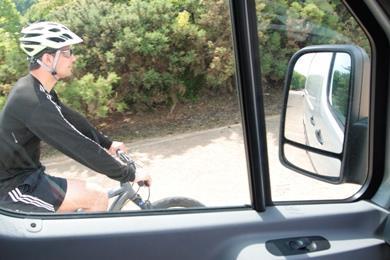
A new report has called into question the effectiveness of safety mirrors fitted to LGVs as a means of preventing accidents involving cyclists.Research carried out by the Transport Research Laboratory (TRL) for the Construction Logistics and Cyclist Safety report found that even when different types of LGV were fitted with safety mirrors there were driver blind spots to the left and in front that could leave them at risk of hitting cyclists.
The report, published by Transport for London (TFL) last week, assessed how cycle safe a DAF tipper, DAF mixer and MAN curtainsider were.
All three vehicles were assessed while being driven in London, and were fitted with front projection, side close proximity, rear view and wide angle rear view mirrors.
Although complete blind spots are rare, the study found visibility of cyclists in some areas around construction vehicles is still "poor".
"The finding of a true blind spot in front of the mixer lorry (arising from the positioning of the retrofitted front projection mirror) illustrates that technical interventions are not a guaranteed solution if the way in which they are fitted and used by drivers is not considered," it states.
Technology for technology's sake
The findings undermine the argument, put forward by cycle campaigners, that simply fitting expensive safety devices to all trucks operating in the capital will solve the problem, said RHA head of media relations Kate Gibbs.
"It is not just about a piece of kit - it is showing someone how to use it. Education will probably do a lot more good. We welcome anything that highlights possible solutions but as far as retrofitting equipment…it is unfeasible because of the cost," Gibbs said.
The report recommends that more comprehensive research be carried out into cyclist blind spots in LGVs and how drivers use mirrors. It also calls for vehicle manufacturers to look at aspects of vehicle design that could be improved to specifically address problems with driving LGVs on London’s roads.
It adds: "This could include changes to windscreen or dashboard design, as well as new technologies and improved mirror design. For example, front and side windows which extend lower (towards the ground) would increase direct visibility to the front and side of these vehicles."













